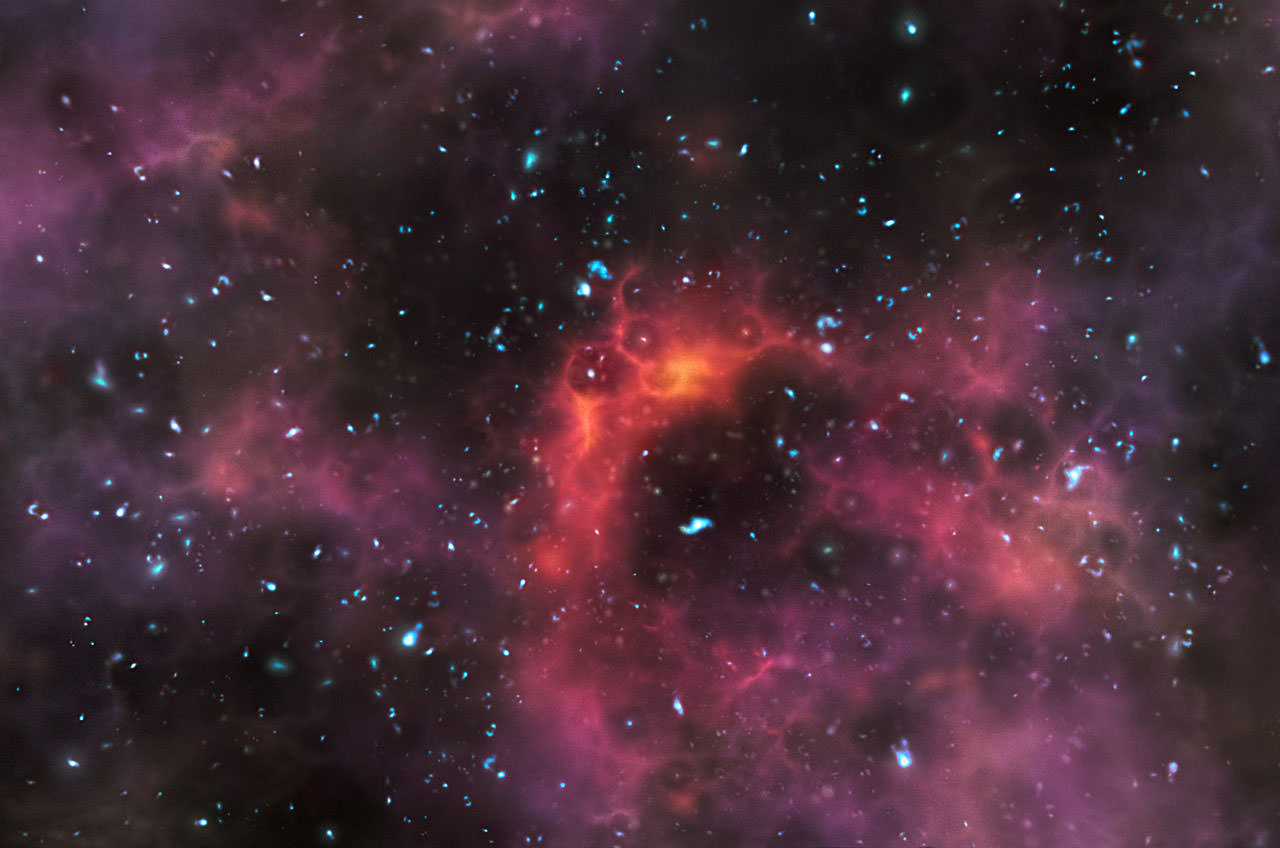[/caption]
The seasons are changing for both hemispheres and it’s not uncommon to wake up to wonderful, mysterious swirls of fog. What we experience here on Earth is water vapor, but the Universe was once filled with a fog of hydrogen gas. As the hours progress, the Sun slowly burns it off – quietly revealing trees, houses and the road ahead. In time after expansion began, the electrically neutral hydrogen gas was slowly swept away by the light of ultraviolet radiation from early galaxies…
Using the Very Large Telescope (VLT) like a “time machine”, a team of astronomers cut through the cosmic cloud layer to view some of the most distant galaxies recorded so far – a look back between 780 million and a billion years after the Big Bang. These antediluvian galaxies excited the gas, making it electrically charged (ionised), it gradually became transparent to ultraviolet light. While you may argue this process is technically known as reionization, there is theorized to be a brief timeline when hydrogen was also ionised.
“Archaeologists can reconstruct a timeline of the past from the artifacts they find in different layers of soil. Astronomers can go one better: we can look directly into the remote past and observe the faint light from different galaxies at different stages in cosmic evolution,” explains Adriano Fontana, of INAF Rome Astronomical Observatory who led this project. “The differences between the galaxies tell us about the changing conditions in the Universe over this important period, and how quickly these changes were occurring.”
As we know from spectroscopy, each element has its own signature – the emission lines – and the strongest in ultraviolet is the Lyman-alpha line generated from hydrogen. This bold spectral signature is easily recognizable – even at a vast distance. By observing the Lyman-alpha line for five very remote galaxies, the team was able to establish two critical factors: their distance through redshift and how soon they could be detected. Through this process, the astronomers were then able to establish how much the Lyman-alpha emission was reabsorbed by the neutral hydrogen fog and create a timeline… A whole lot like recording what minute each landmark reappears when terrestrial fog clears and seeing the long road ahead.
“We see a dramatic difference in the amount of ultraviolet light that was blocked between the earliest and latest galaxies in our sample,” says lead author Laura Pentericci of INAF Rome Astronomical Observatory. “When the Universe was only 780 million years old this neutral hydrogen was quite abundant, filling from 10 to 50% of the Universe’ volume. But only 200 million years later the amount of neutral hydrogen had dropped to a very low level, similar to what we see today. It seems that reionization must have happened quicker than astronomers previously thought.”
As always, there’s a bit more to the story. In this case, by understanding the rate at which the ancient absorbent obstruction began fading, scientists could also deduce the source of the powerful ultraviolet radiation. Could it be first generation stars – or even the work of primeval black holes?
“The detailed analysis of the faint light from two of the most distant galaxies we found suggests that the very first generation of stars may have contributed to the energy output observed,” says Eros Vanzella of the INAF Trieste Observatory, a member of the research team. “These would have been very young and massive stars, about five thousand times younger and one hundred times more massive than the Sun, and they may have been able to dissolve the primordial fog and make it transparent.”
To prove anything, it’s going to take a lot more research and some very accurate measurements – ones that are already in the planning stage for the future ESO European Extremely Large Telescope. But, in the meantime, the team used the great light-gathering power of the 8.2-metre VLT to carry out spectroscopic observations, targeting galaxies first identified by the NASA/ESA Hubble Space Telescope and in deep images from the VLT.
Original Story Source: ESO Press Release. For Further Reading: Probing The Earliest Galaxies And The Epoch Of Reionization.

